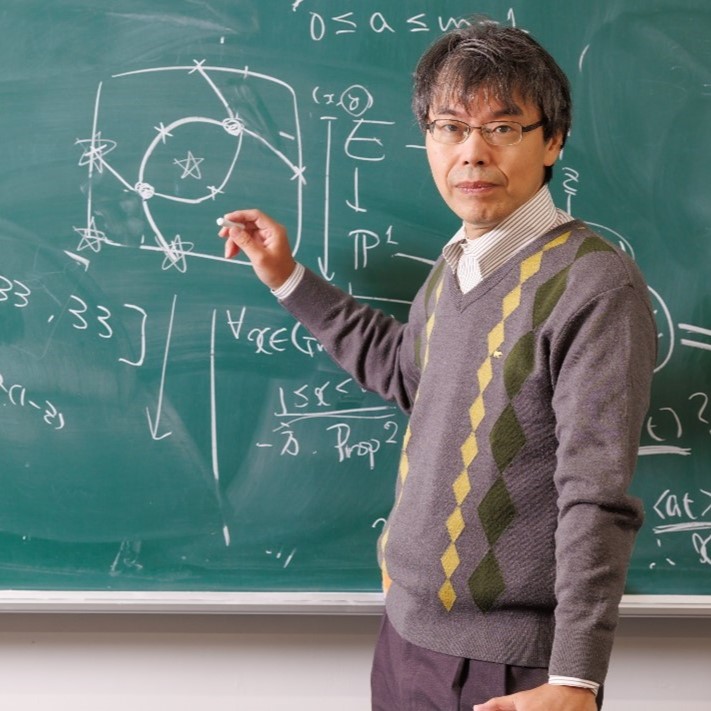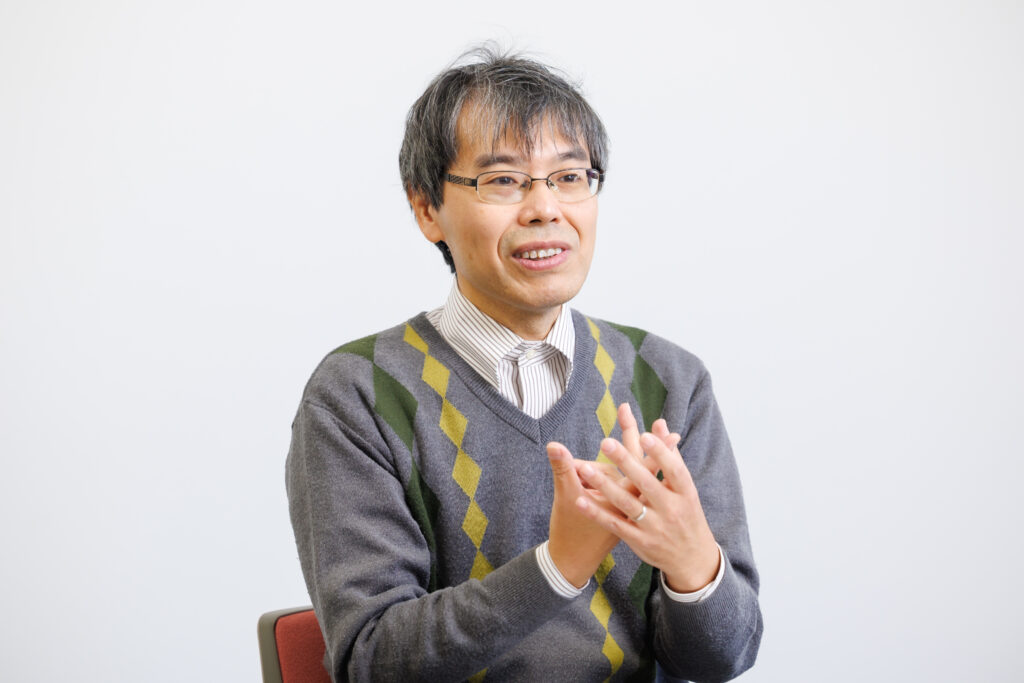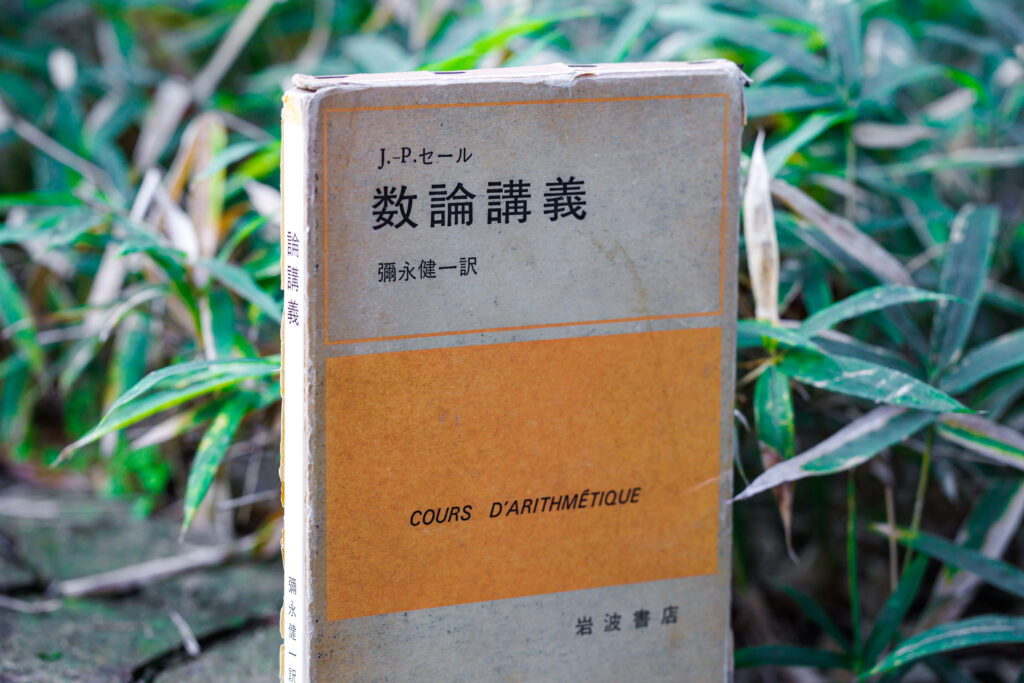
Professor Hiroshi Tsunogai of the Faculty of Science and Technology is an expert in number theory. He takes the constructive Galois theory approach to creating equations, and seeks to apply them to number theory. But what, exactly, is this “tangible” mathematics that calculates concrete results, predicts rules, and seeks to prove them?
How do you solve equations? For mathematicians, methods for solving equations have long been a key research topic. Indeed, the quadratic formula we learn at school was also born out of such research.
Interestingly, while formulae exist for solving cubic and quartic equations, there are none for solving quintic or higher-degree equations. This was discovered by a French mathematician in the first half of the 19th century, when he was not yet 20 years old: Évariste Galois.
Galois thought deeply about the structures of equations. Using an approach to groups that he himself had devised, he identified in which cases formulae for solving equations exist. My research into “constructive Galois theory” is the opposite direction of this—in other words, I create equations that fulfill desired group conditions.
Calculate the results of equations, predict rules, and prove them

By deciding on the coefficients for each term at random, you can come up with any number of equations; but these may not lead to the desired results. So, instead, I create various equations using groups that demonstrate the symmetry of shapes such as regular pentagons, and using the advances of modern mathematics.
After I have created an equation, the next step is to use it. I want to apply the equations I create to number theory, which is concerned with the properties of integers and rational numbers. I investigate the properties of an equation by entering concrete values for its variables. I then observe what conditions the variables must fulfill in order to create properties of interest to number theory.
As I continue my observations, I try to predict which cases will result in interesting properties; and if I can predict these accurately, I next attempt to prove the rules that govern them. So the cycle via which I advance my research is this: I create an equation, I observe its properties, I predict rules, and I try to prove them.
Integers are a simple and familiar subject for everyone who learned math at elementary school. However, they are full of unresolved puzzles. Famous puzzles in number theory include the abc conjecture and the Riemann hypothesis. But such high-level conjectures are too complex for me—to be honest, I do not fully understand them.
If the main road of number theory means confronting conjectures head-on, then I am walking a side road. Driving down the main road of number theory in a high-performance sports car is important—and I am full of admiration for mathematicians who can do that. But I also believe there is great value in taking leisurely strolls down side roads.
Research akin to appreciating the flowers along the side of the road
If a road is thick with plant life or particularly steep, then it can be difficult to traverse by car. But if you walk, you can explore the surroundings at your own pace—and you may discover things that have not been discovered before.
There are countless examples of side roads that are interesting from a mathematical point of view. And it is not unusual for equations that I have created to be used by other mathematicians, who then predict number theory rules, and go on to prove them.
If your side road investigations only enable you to deliver insignificant research results, then you must go back and take a different path. Luckily, I have not had to do that thus far: interesting problems have appeared one after the other, and so the side roads I have walked down have felt rewarding.
Whether you choose to drive at high speed down the main road or to take your time investigating side roads is a matter of preference, and both choices are important for mathematical research.
I am fond of tangible, concrete equations, and I enjoy calculating the results; my research is akin to appreciating the flowers along the side of the road—and I hope to continue doing this going forward.
The book I recommend
“Cours d’Arithmétique”(A course in arithmetic)
by Jean-Pierre Serre, Japanese translation by Kenichi Iyanaga, Iwanami Shoten

I read this book for my first research seminar some 30 years ago. It is no exaggeration to call it the most established textbook on number theory. Its content is dense, but it gave me a hands-on lesson in how to read technical texts. I have fond memories of this book—it formed the starting point for my own research.
-
Hiroshi Tsunogai
- Professor
Department of Information and Communication Sciences
Faculty of Science and Technology
- Professor
-
Professor Hiroshi Tsunogai graduated from the School of Science and Engineering, Waseda University, and received his Ph.D. in science from the university’s Graduate School of Science and Engineering. After working as an assistant at the School of Science and Engineering, Waseda University, and as an assistant, lecturer, and associate professor at the Faculty of Science and Technology, Sophia University, he was appointed to his current position in 2013.
- Department of Information and Communication Science
Interviewed: November 2022